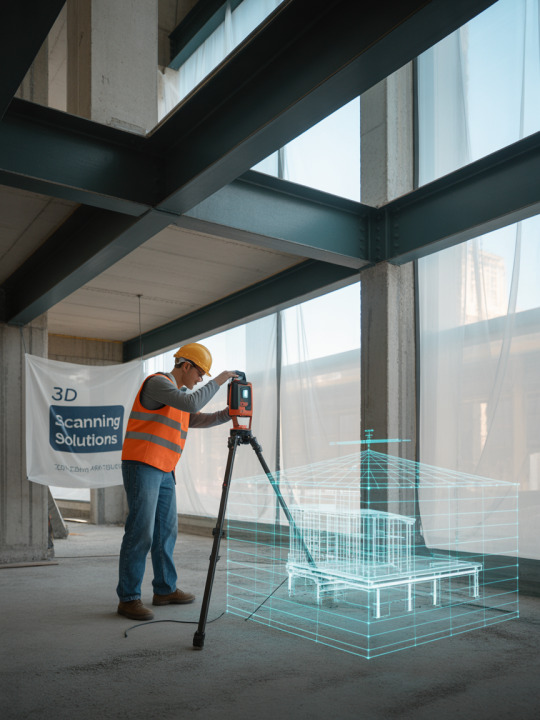#gis technology
Explore tagged Tumblr posts
Text
Next-Gen GIS & Intelligent Assistants: Transforming Telecom by 2025
Explore how next-generation GIS technology and intelligent assistants are set to revolutionize the telecom industry by 2025. This blog from VC4 delves into innovative advancements, future trends, and the impact on operations and customer experience.
0 notes
Text
GIS Technology: Revolutionizing Spatial Data Analysis
The advancements in GIS technology have led to unprecedented capabilities in spatial data analysis. Here are some ways GIS is transforming this domain:
1. Integration of Big Data
With the advent of big data, GIS platforms now process massive datasets from various sources, including IoT devices, social media, and remote sensors. This integration allows for more comprehensive and accurate analyses.
2. Real-Time Data Analysis
Modern GIS tools can process real-time data, enabling immediate insights and faster decision-making. For instance, live traffic data can help optimize transportation routes dynamically.
3. Artificial Intelligence and Machine Learning
AI and machine learning algorithms are being integrated into GIS to enhance predictive modeling and automate complex analyses. These technologies enable pattern recognition and anomaly detection in spatial data.
4. 3D and 4D Modeling
GIS technology now supports 3D and 4D modeling, providing a more detailed and dynamic representation of spatial data. This capability is crucial for urban planning, infrastructure development, and environmental studies.
5. Cloud-Based Solutions
Cloud computing has made GIS more accessible and scalable. Cloud-based GIS platforms allow users to collaborate, share data, and perform analyses without the need for extensive hardware.
6. Enhanced Data Visualization
Innovative visualization tools, such as augmented reality (AR) and virtual reality (VR), are being integrated with GIS. These tools offer immersive experiences, making spatial data more comprehensible and engaging.
7. Democratization of GIS
User-friendly interfaces and affordable solutions are making GIS accessible to a broader audience, including small businesses and individuals. This democratization is fostering innovation and expanding the scope of GIS applications.
Challenges in Implementing GIS Technology
Despite its numerous benefits, implementing GIS technology comes with challenges, such as:
High Initial Costs: Setting up GIS infrastructure and acquiring licenses can be expensive.
Data Accuracy: Ensuring the accuracy and reliability of spatial data is critical for effective analysis.
Technical Expertise: Operating GIS platforms requires skilled personnel with specialized knowledge.
Data Privacy: Handling sensitive geographic data raises concerns about privacy and security.
Integration Issues: Combining GIS with existing systems can be complex and time-consuming.
Future Trends in GIS Technology
The future of GIS technology is promising, with continuous innovations and evolving applications. Some emerging trends include:
Geospatial AI: The integration of AI with GIS will lead to smarter and more automated analyses.
Blockchain for Data Security: Blockchain technology will enhance data integrity and security in GIS systems.
IoT Integration: The Internet of Things (IoT) will provide real-time data streams for more dynamic GIS applications.
Augmented and Virtual Reality: AR and VR will revolutionize how spatial data is visualized and interpreted.
Open-Source GIS: The growth of open-source GIS platforms will increase accessibility and foster innovation.
Conclusion
GIS technology is undeniably revolutionizing spatial data analysis, driving efficiency and innovation across industries. By harnessing its powerful tools and capabilities, organizations can gain deeper insights into geographic and spatial relationships, enabling better decision-making and resource management. As technology continues to evolve, GIS will remain at the forefront of spatial data analysis, shaping the future of how we interact with and understand our world.
0 notes
Text
Top 10 Best Geospatial Companies

This guide highlights the top 15 GIS (Geographic Information Systems) companies leading the way with their cutting-edge solutions in mapping and spatial analysis. It points out how crucial GIS technology has become for making informed decisions in various sectors, given that understanding location data is key in today’s world. With the geospatial market set to grow from USD 8.1 billion in 2020 to an estimated USD 14.5 billion by 2030, finding the right GIS partner is more important than ever.
This list is designed to help organizations pick the best GIS company to work with. It includes companies known for their deep knowledge, wide range of geospatial services, and solid reputation in the field. These companies stand out for using the latest in GIS technology to solve real problems, helping businesses stay on top of the game in a world where data rules.
12th Wonder Founded: 2012 Headquarters: California, United States. Expanded presence in Ivory Coast, Japan, and India. 12thWonder has a global tech team of 100 employees with a diverse and expanding workforce. Key Services: – GIS Application Development (Web, Mobile, Desktop) – Remote Sensing & GIS, Photogrammetry, Drone, and LiDAR Services – Consulting Services in Geospatial Solutions
12th Wonder specializes in geospatial solutions, blending IT services with tailored GIS applications to meet the needs of various industries including utilities, telecom, mining, and urban planning. Their offerings range from developing GIS applications across different platforms to providing data services using advanced techniques like remote sensing and LiDAR. The company also offers consulting services to navigate complex geospatial challenges. Leveraging a team with deep domain expertise and a commitment to innovation, 12th Wonder aims to extend asset lifespan, standardize revenue, and efficiently meet people’s needs across the globe. Their approach to geospatial solutions emphasizes user centric design, agile development methodologies, and a collaborative relationship with clients to ensure tailored, industry specific outcomes.
FARO Technologies Founded: 1981 Headquarters: Lake Mary, Florida, USA Employee Count: 1,000+ Key Services: – 3D measurement, imaging, and realization technology – Computer aided measurement and imaging devices – Software for 3D modeling and analysis
FARO Technologies specializes in the design, development, and marketing of 3D measurement and imaging solutions. Serving a wide range of industries, including manufacturing, construction, engineering, and public safety, FARO’s technology facilitates the measurement and analysis of complex spaces and geometries.
Topcon Positioning Systems Founded: 1932 Headquarters: Livermore, California, USA Key Services: – Precision positioning technology – Software solutions for surveying and construction – Optical equipment for ophthalmology and medical diagnostics
Topcon Positioning Systems is a leading provider of precision equipment for the surveying, construction, and agriculture industries. They offer innovative solutions that combine GPS technology, optical, laser, and data collection systems, enhancing productivity and efficiency.
Precisely Founded: 1920 (as Pitney Bowes Inc.) Headquarters: Stamford, Connecticut, USA Key Services: – Data integrity software – Location intelligence solutions – Data quality and enrichment services
Now operating under the brand name Precisely, the company provides critical data integrity solutions, including location intelligence, data quality, and enrichment, to help clients make better decisions by understanding the relationships between data and geography.
DigitalGlobe (part of Maxar Technologies) Founded: 1993 Headquarters: Westminster, Colorado, USA Employee Count: Part of Maxar Technologies Key Services: – Earth observation and geospatial data – High-resolution satellite imagery – Advanced geospatial analytics solutions
As a leader in Earth observation and geospatial data, DigitalGlobe provides comprehensive imaging and analysis capabilities that enable clients across the globe to make critical decisions.(Read More…)
#Best Geospatial Companies#GIS (Geographic Information Systems)#GIS technology#Top Geospatial Companies#Top 10 Best Geospatial Companies
0 notes
Text
How Pole Loading Analysis in GIS Mapping Enhances Structural Integrity in Utility Poles
Utility poles silently support the backbone of our power infrastructure. Ensuring these poles are structurally sound is crucial for a reliable power supply. Here, we'll explore how combining pole loading analysis with GIS (Geographic Information System) mapping can enhance the structural integrity of utility poles, making our power distribution networks more robust and dependable.
The Power of GIS Mapping:
GIS mapping allows us to visualize, analyze, and interpret location-based information. When it comes to utility poles, GIS mapping helps create detailed maps that pinpoint the exact locations of each pole. This spatial awareness is the first step towards effective infrastructure management.
Integrating Pole Loading Analysis:
Pole loading analysis delves into the forces and stresses acting on utility poles, evaluating their load-carrying capacity. Combining this analysis with GIS mapping adds an extra layer of intelligence. By applying Pole Loading Analysis within a GIS framework, we can analyze not just individual poles but the entire network in a spatial context.
Enhancing Structural Integrity through GIS-Mapped Pole Loading Analysis:
Precise Location Identification:
GIS mapping provides accurate coordinates for each utility pole. This precision allows engineers to focus their pole loading analysis on specific geographic areas, ensuring that assessments are localized and tailored to the unique conditions of each location.
Visualizing Load Distribution:
GIS mapping tools enable the visualization of load distribution across the entire power distribution network. Engineers can see which poles are under more stress, helping them identify potential weak points and take accurate measures to reinforce these structures.
Predictive Maintenance Planning:
Combining GIS mapping with pole loading analysis facilitates predictive maintenance planning. By understanding the structural health of each pole and its geographic context, utility companies can schedule maintenance activities more efficiently, reducing downtime and minimizing the impact on power consumers.
Optimizing New Installations:
When expanding or upgrading the power grid, GIS-mapped pole loading analysis assists in optimizing new pole installations. Engineers can use the spatial data to strategically place poles, taking into account existing infrastructure and potential load variations in different areas.
Emergency Response Planning:
In the event of natural disasters or accidents, GIS-mapped pole loading analysis aids in emergency response planning. By knowing the structural status of each pole and its location, utility companies can prioritize repairs and restoration efforts effectively, ensuring a quicker recovery of power services.
Choose Polosoft Technologies for Accurate Pole Loading Analysis
In today’s world, where a reliable and secure power supply is crucial, pole loading analysis is a strong solution. With our precise GIS mapping and other Geospatial data services, Polosoft Technologies offers accurate location data for each pole, allowing tailored analysis in specific areas. Our pole loading analysis service is great for planning maintenance, minimizing downtime, and optimizing activities.
When it comes to new installations, we use spatial data for a strategic approach, adding to overall efficiency. In emergencies, our GIS-mapped analysis helps prioritize repairs for a quick power service recovery. The integration of GIS mapping with pole loading analysis provides an efficient solution for predictive maintenance planning, minimizing downtime, and optimizing maintenance activities. Choose Polosoft as your partner in accurate GIS mapping and pole loading analysis, and take a step towards a future where power distribution is both dependable and resilient.
0 notes
Text

Sorry, the first gay doll was NOT Gay Bob (1977), it was Mattel's Big Jim and his buddies from 1972. TELL ME THAT I AM WRONG AS YOU LOOK AT THAT TOTALLY CAMP GROUP PHOTO. You can't.
#technology#vintage#dolls#toys#1972#gay gay gay#Barbie has competition for GI Joe's attention#Ken has blown at least two of these guys#The Village People wish they were as gay as this
46 notes
·
View notes
Text









ʚ♡ɞ ʚ♡ɞ ʚ♡ɞ ʚ♡ɞ ʚ♡ɞ ʚ♡ɞ ʚ♡ɞ ʚ♡ɞ
Xilonen Stimboard
Req for myself and @stelleeee
Note : I love her sm
📀-🛏-📀
💤-🐆-💤
📀-🛏-📀
ʚ♡ɞ ʚ♡ɞ ʚ♡ɞ ʚ♡ɞ ʚ♡ɞ ʚ♡ɞ ʚ♡ɞ ʚ♡ɞ

#autism#actually autistic#stim blog#stim#stimblr#stimming#stim gifs#stimboard#visual stim#genshin impact#genshin#xilonen#xilonen genshin#xilonen genshin impact#ocelot stim#animal stim#jewelry stim#dj stim#skating stim#yellow stim#technology stim#genshin stimboard#natlan#forest stim#nature stim#sports stim#green stim#genshin impact stimboard#Xilonen gi#stims
11 notes
·
View notes
Note
HIHIHHIH HELLO ^_^!!!!!!! COULD YOU PRETTY PLEASE MAKE A G.I. ROBOT STIMBOARD :33!!! /NF!!!!
(AZ FOR SPECIFIC STUFF LIKE TECH N SLIME :З,,!!)










G.I. Robot (DC Comics) with technology and slime!
🟢|🤖|🟢 🤖|🟢|🤖 🟢|🤖|🟢
#weheartstims#mod hearts#stimboard#gi robot#g.i. robot#dc comics#technology#tech#slime#brown#bronze#green#hands#metallic#robot#robots#animatronic#microchip#tweezers#glossy slime#clear slime#deco slime#iridescent#iridesence#spinning
5 notes
·
View notes
Text









Yusei Fudo (Yu-Gi-Oh! 5DS)
Middle image edited by me, F2U with credit
🦊 / 🌸 / 🦊 / 🌸 / 🃏 / 🌸 / 🦊 / 🌸 / 🦊

#yusei fudo#yugioh#yugioh yusei#yusei yugioh#stimblr#stimboards#stimboard#stim board#stim blog#technology stim#tech stim#Yu-Gi-Oh#yu gi oh#Yu-Gi-Oh stim#card stim#hand stim#kit - stimboards#den nap - queue#yugioh 5ds#ygo 5ds
4 notes
·
View notes
Text
I wish we could stop relying on phones one day. One day when I'm older I wanna get rid of mine
#i wish everything wasnt so technologically advanced#just occasionally going on computers calling people through physical telephones not a little screeb#i eish we could just go outside and not have to worry about beingnrecorderd#i wanna just gi outside. i dont wanna jnow ehats happening on the internet i sont wanna scroll. just enjoy myself.#when did it become so nornam to call pepple so much#like. i think it would be fun if we met up like before phones. dont text each other when youre going just find lit if the persons there orno#does any one get me and this or am i crazy
2 notes
·
View notes
Text
#gsourcetechnologies#architecturedesigns#engineeringdesigns#zoning#lidar technology#gis mapping#landscape architect#architecture#cadservices#lidar
2 notes
·
View notes
Text
3D Laser Scanning for Building Renovation: Game-Changer in Construction Planning

Renovating a building—whether commercial, industrial, or residential—requires precision, detailed documentation, and accurate measurements. Traditional surveying methods often fall short in capturing complex geometries and hidden flaws.
Enter 3D laser scanning—a revolutionary technology transforming how professionals approach building renovation projects.
In this article, we’ll explore what 3D laser scanning is, how it works, and why it’s a must-have tool for any modern renovation project.
What Is 3D Laser Scanning?

3D laser scanning is a non-invasive method of capturing the physical structure of a building using laser beams. The technology generates millions of precise data points, known as a point cloud, that form a detailed digital representation of the existing space.
This digital twin can be converted into 2D drawings, 3D BIM models, or CAD files, enabling stakeholders to assess the current condition and plan renovation activities more effectively.
Why 3D Laser Scanning Is Essential for Building Renovation?
1. Accurate As-Built Documentation
One of the biggest challenges in renovation is working with outdated or missing as-built drawings. 3D laser scanning eliminates guesswork by producing accurate, up-to-date digital models of the existing building.
2. Saves Time and Cost
Laser scanning significantly reduces the time required for manual measurements. It also helps avoid costly mistakes by detecting inconsistencies early—before they affect construction.
3. Enhances Coordination Among Teams
With point cloud data integrated into BIM or CAD environments, engineers, architects, and contractors can work from the same source of truth. This improves coordination, reduces RFIs (Requests for Information), and streamlines project timelines.
4. Ideal for Complex or Historical Structures
Renovating older buildings, especially those with irregular geometries or historical significance, requires delicate precision. 3D scanning captures even the smallest architectural details without physical contact.
How the 3D Laser Scanning Process Works?
Step 1: On-Site Scanning
Professionals bring high-precision laser scanners to the site and capture 360-degree scans of the entire building interior and exterior.
Step 2: Point Cloud Generation
The scan data is processed into a point cloud—a collection of spatial data points representing the surfaces and features of the building.
Step 3: Model Creation
Using specialized software, the point cloud is converted into 3D BIM models, 2D floor plans, or construction-ready drawings, depending on the project requirements.
Step 4: Design & Renovation Planning
Designers and engineers use the models to visualize existing conditions, simulate renovation options, and create clash-free construction plans.
Use Cases of 3D Laser Scanning in Renovation Projects
Commercial Renovations: Office buildings, retail spaces, and warehouses.
Residential Upgrades: Homes, apartments, and heritage properties.
MEP Retrofits: HVAC, plumbing, and electrical layout upgrades.
Facade Restoration: Historic buildings with ornate designs.
Advantages Over Traditional Surveying
Feature -> Traditional Surveying -> 3D Laser Scanning
Accuracy -> Moderate -> High (±2 mm)
Time -> Slower -> Faster
Level of Detail -> Limited -> Extensive
Documentation -> 2D only -> 2D + 3D
Choosing the Right 3D Laser Scanning Provider
When selecting a 3D laser scanning service for your renovation project, consider:
Experience with similar building types
Use of advanced equipment like Leica or Faro scanners
Ability to deliver BIM and CAD outputs
Strong portfolio and client testimonials
Final Thoughts
3D laser scanning is more than just a high-tech tool—it's a smart investment that improves accuracy, efficiency, and project outcomes in building renovation. Whether you're restoring a historic structure or modernizing a commercial space, laser scanning delivers the insights you need to build with confidence.
#building design#architecture#laser scanning#3d laser scanning#3d scanning#gis#laser scanning technology
0 notes
Text
Top AI Tools to Skyrocket Your Website Rankings

In the ever-evolving digital world, staying ahead in search rankings is more competitive than ever. But what if you could work smarter, not harder? That’s where AI-powered SEO tools come into play. These tools help automate tasks, analyze data more effectively, and provide actionable insights that can elevate your website’s visibility in search engines.
Let’s explore the top AI tools that can truly skyrocket your website rankings.
1. Surfer SEO
Best for: Content Optimization
Surfer SEO is a powerful AI tool that helps you create content designed to rank. It compares your content against the top-ranking pages for a keyword and gives real-time optimization suggestions—like ideal word count, keyword usage, and NLP recommendations.
🔍 Key Features:
Content Editor with real-time scoring
SERP Analyzer for competitive analysis
Keyword Surfer Chrome Extension
2. Jasper AI
Best for: Writing SEO-Friendly Content
Jasper AI (formerly Jarvis) is an AI writing assistant that can generate high-quality blog posts, product descriptions, and meta tags. It’s great for marketers who want to scale content production without sacrificing quality.
✍️ Key Features:
Long-form content creation
SEO mode (integrated with Surfer SEO)
50+ content templates
3. Frase.io
Best for: Content Briefs & Answering Search Queries
Frase helps you create content that directly answers user search intent. It analyzes the top results and builds a brief so you can structure your content with maximum SEO impact.
📈 Key Features:
AI-generated content briefs
Question research from Google’s “People Also Ask”
Content scoring system
4. MarketMuse
Best for: Content Strategy & Optimization
MarketMuse uses AI to identify content gaps and helps you create topic-rich, optimized pages. It’s ideal for large sites or agencies working on complex content strategies.
🧠 Key Features:
AI-driven content plans
SERP and competitor analysis
Optimization suggestions with content scoring
5. RankIQ
Best for: Bloggers & Beginners
RankIQ offers a simplified interface and easy-to-use tools that make SEO content creation accessible for bloggers and small business owners. It provides keyword suggestions and outlines for ranking on Google’s first page.
✅ Key Features:
Low-competition keyword library
Content optimizer
Title and SEO score analysis
6. Clearscope
Best for: Enterprise SEO Optimization
Clearscope is trusted by large brands and agencies to refine their content for better performance. It provides a content grade, readability score, and keyword suggestions based on top-ranking pages.
📊 Key Features:
Real-time optimization guidance
Deep keyword and SERP analysis
Integrations with Google Docs & WordPress
7. ChatGPT (OpenAI)
Best for: Idea Generation & SEO Support
ChatGPT isn’t a traditional SEO tool but can be used creatively for keyword ideas, blog outlines, SEO copywriting, and even analyzing competitors if prompted correctly.
💡 Key Features:
Fast brainstorming and outline generation
Can summarize competitor content
Helps write SEO-optimized meta tags and product descriptions
Final Thoughts
AI is no longer the future of SEO—it’s the present. Whether you're a solo blogger or managing enterprise-level websites, the right AI tools can significantly enhance your SEO efforts. By integrating tools like Surfer SEO, Jasper, and Frase, you’ll not only save time but also produce data-driven content that ranks.
Ready to skyrocket your website rankings? Start leveraging AI and let technology take your SEO game to the next level.
#aitools#ai#chatgpt#artificialintelligence#gpt#digitalmarketing#machinelearning#technology#socialmediamarketing#openai#business#tech#o#productivity#aiart#newtech#datamapping#geospatialtechnology#gis#digitaltwins#dmapping#geospatial#marketing#marketingtips#midjourney#lidar#aitechnology#maps#web#entrepreneurship
0 notes
Text
#gis solutions#smart utilities#asset management#geoai technology#gis for utilities#utility management#business#design#education
0 notes
Text
Choosing the right GIS software in 2025: ArcGIS Pro vs QGIS 3 Analyzed I have just published a comprehensive comparison of the two leading GIS platforms as they stand in 2025. The age-old battle between proprietary and open-source solutions continues, but with fascinating new developments! Both platforms have evolved dramatically since 2020, with QGIS closing many historical capability gaps while ArcGIS Pro has leaned into enterprise integration and AI. Is your organization making the right choice? Well, the answer depends on your specific needs, budget constraints, and strategic priorities. Check out my full analysis to help navigate this critical decision for your mapping needs! Please do have a look at the post, leave a like and comment your thoughts and your experiences working with these softwares. Also do let me know which software do you think is worth investing for? Since it is the AI revolution, which software can perform tasks with utmost simplicity and efficiently, ArcGIS Pro or QGIS 3? Let's get the conversation and engagement going. Do comment, like, share and subscribe to my blog. Your engagement would mean a lot to me. Let's map the world for a sustainable future with Mapping Tomorrow. 🗺️ Subscribe to my blog website: https://mappingtomorrow.wordpress.com and get started with Mapping Tomorrow. Your one step can change your future. SUBSCRIBE NOW and be updated ahead of everyone. #ArcGISPro #QGIS3 #GISSoftware #GISComparison #GeospatialSoftware #GISTechnology #SpatialData #GISMapping #GeographicInformationSystems #OpenSourceGIS #ProprietaryGIS #GISPlatforms #MapChat #GISCommunity #SpatialAnalysis #GIScience #GeoTech #GISProfessional #GISCareer #GISJobs #GISSkills #GISEducation #GISCertification #EsriUser #QGISCommunity #OpenSourceCommunity #EsriUC #FOSS4G #UrbanPlanning #EnvironmentalGIS #BusinessIntelligence #LocationIntelligence #DataVisualization #TechComparison #SoftwareReview #2025Tech #OpenSource #TechDecisions #SoftwareEvaluation #MappingTomorrow #ProfessionalDevelopment #TechTrends #IndustryInsights #GISTwitter #MapTwitter #TechTwitter #GISLife #MappingCommunity #TechTools #GISResources #GeospatialTechnology #MappingTools
#ai#arcgispro#artificial-intelligence#cartography#education#environment#geographicinformationsystems#geospatialinelligence#geospatialtech2030#gis#gisanalysis#gissoftware#mapping#qgis#technology
0 notes
Text
Map: Detroit Regional Rail Fantasy Map
by: Neel Marathe, University of Michigan urban technology student completing a GIS internship What if SEMTA, the one-line commuter rail from the 70s, grew instead of dying out? Inspired heavily by Metra and GO Transit, this project that I worked on over spring break imagines that Detroit had a regional/commuter rail system that matured through the ages (not like a brand new proposal). This…
#2025#ArcGIS Pro#cartography#Detroit#Detroit United Railway#electric rail#fantasy#Figma#geography#GIS#map#Neel Marathe#SEMCOG#SEMTA#University of Michigan#urban technology
0 notes
Text
Bridge Tech and Agriculture: Information Systems Lecturer/Professor Opportunities at NUST! - March 2025
The National University of Science and Technology (NUST) is seeking passionate and experienced academics to join their Faculty of Agricultural Science and Technology as Lecturers/Senior Lecturers/Associate Professors in Agricultural Information Technology, specifically focusing on Information Systems! If you’re eager to equip students with the skills to manage and utilize information in the…

View On WordPress
#Agricultural Information Technology#AgTech Jobs#Bulawayo Jobs#Database Systems#GIS Jobs#Human Computer Interaction#Information Systems Jobs#Lecturer Jobs#Network Administration#NUST Jobs#Professor Jobs#Research Jobs#Teaching Jobs#University Jobs
0 notes